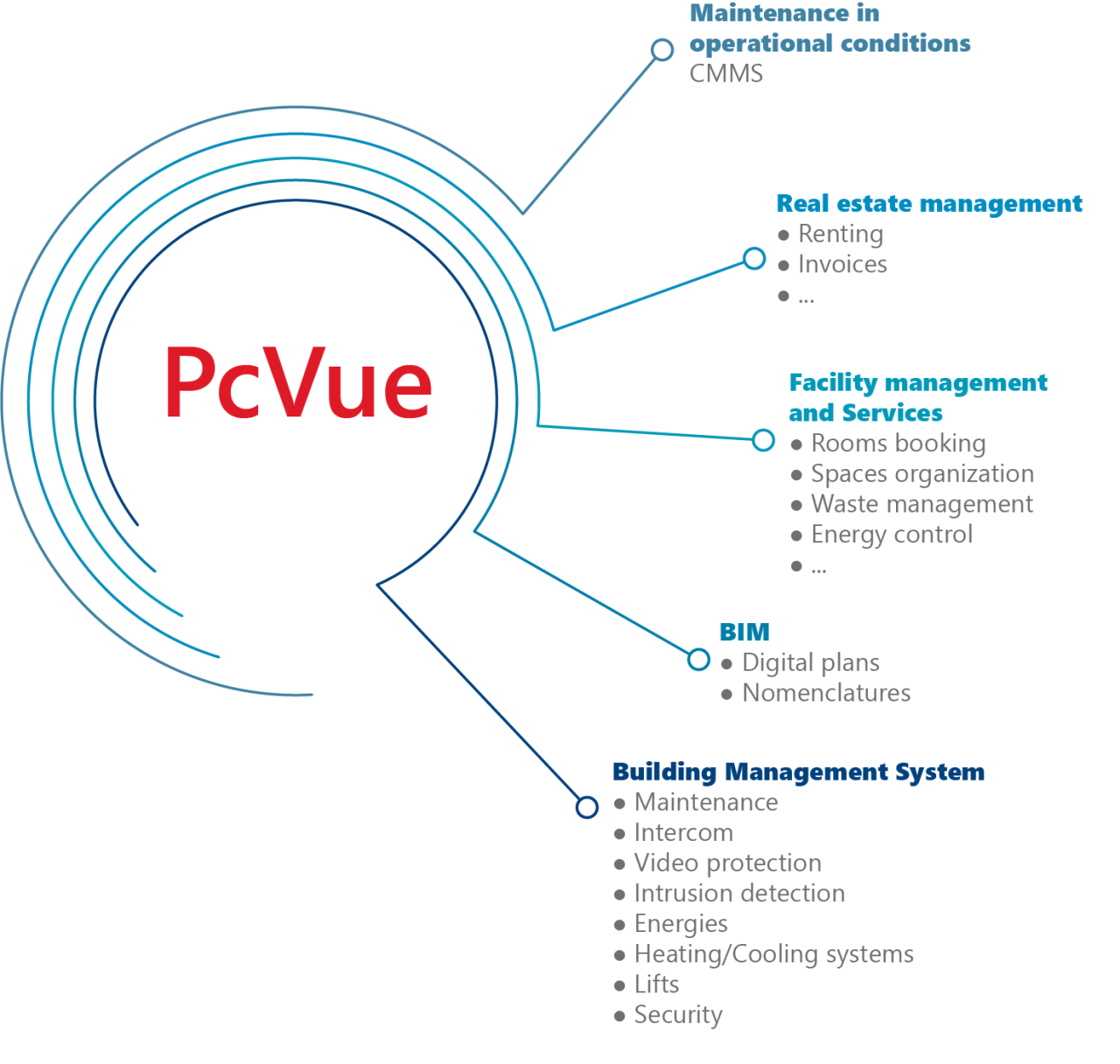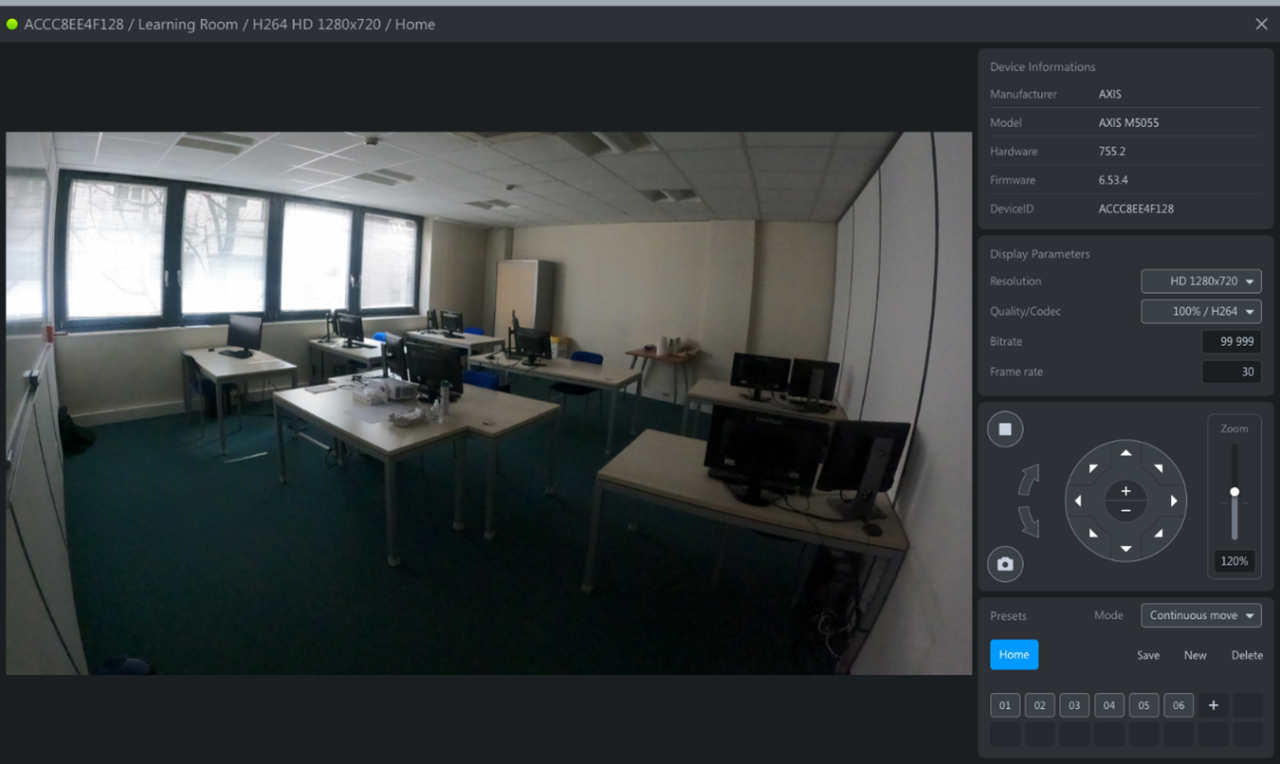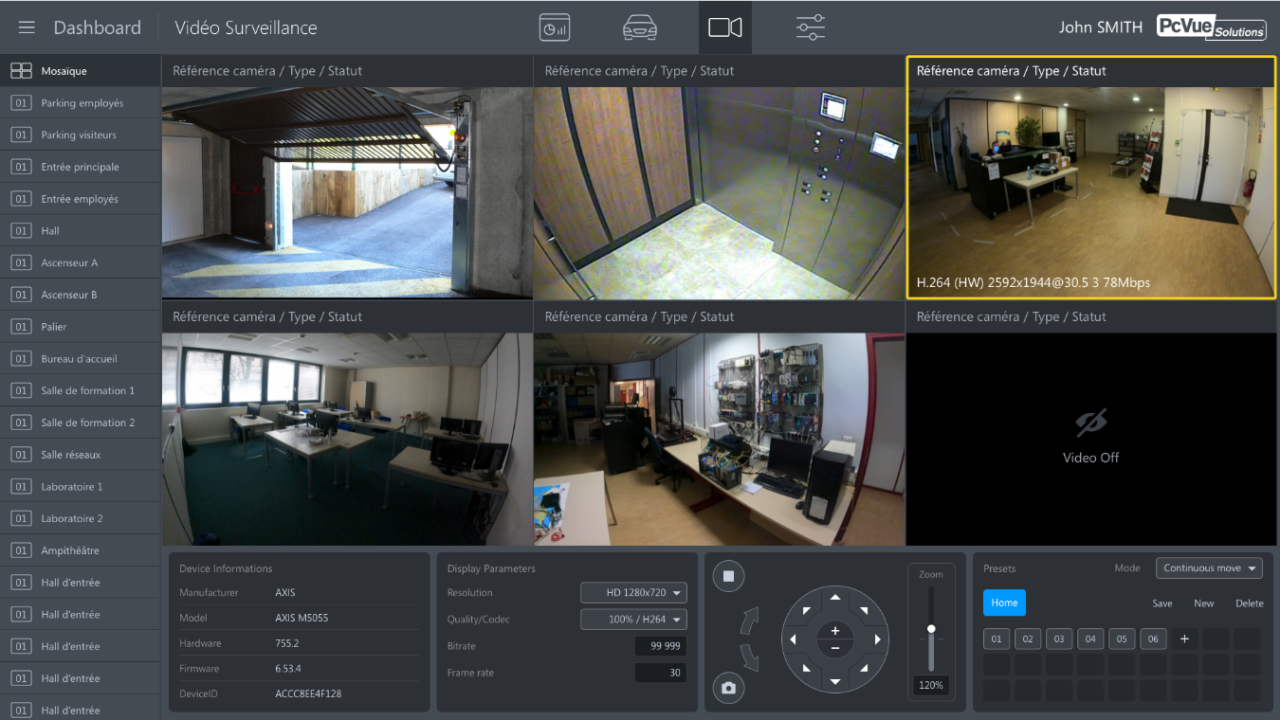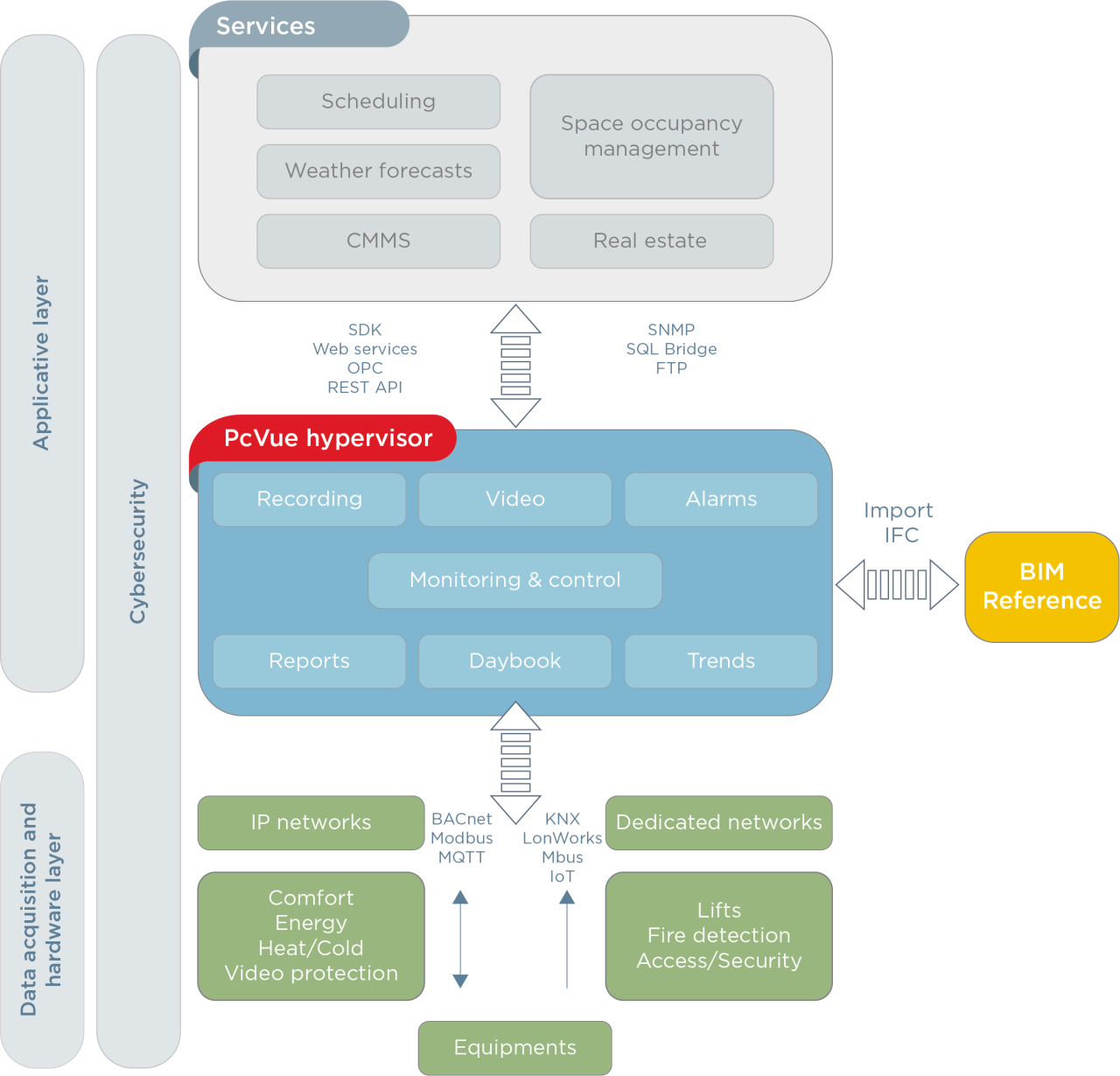
Due to their complexity, buildings must respond to a variety of issues
Today’s buildings and infrastructures face 3 main challenges:
- Regulatory requirements to optimize energy consumption,
- High expectations in terms of comfort and services provided to occupants,
- A necessary profitability
These demands are reflected in the need for building managers to optimize the operation and maintenance of technical assets, to provide more services to the occupants, but also to ensure the proper functioning and durability of the installations while allowing their evolution.
Therefore, the aggregation of data from all services and their exploitation must be done in a unified and centralized way.
Interoperability
A building is made up of different technical packages (comfort, energy, HVAC, intercom, intrusion and video surveillance, elevators, fire detection), each of which has its own specificities, resulting in “proprietary” sub-systems made up of heterogeneous equipment.
On the other hand, a set of services (asset management, weather forecasting, space reservation, etc.) are available via different systems that are independent.
The resulting difficulty to get full interoperability makes the aggregation of data complicated and the global operation difficult or even impossible, with the consequence of not being able to respond effectively to the problems raised.
Building Operating System (BOS)
These observations lead us to consider an hypervision or a BOS type solution, in other words a platform that federates the various subsystems within a single platform to operate and maintain a building efficiently.

PcVue connects every building systems
Multi-functional
An hypervision should be able to provide a single platform to harmonize data from all types of interfaces to give them the same look and feel without having to worry about their sources. It should gather the data and convert it to relevant information to the operator.
Durability, continuity of service and scalability
Scalable and flexible, the platform must be capable of adapting to changes in order to support the expansion of a building without having to redevelop everything. It allows the supervision of a single building as well as several buildings.
It should also ensure compatibility over time, ease of upgrading and feature redundant architecture for continuity of service.
Data acquisition & Interoperability
Interoperability and communication with all subsystems (comfort, energy, PSC, intrusion and video surveillance, access control, elevators, fire) and equipment is primary.
The system should be completely open according to the industry standard labels such as R2S (Ready To Services) label by the Smart Building Alliance.
The supervision software must offer a high capacity of communication with field equipment as well as a high interoperability to exchange with third party systems using open and standardized interfaces.
All smart building standards must be supported, but also others that allow the integration of the system into a larger whole (Smart Grid, Smart City).
Energy monitoring
The supervision software must feature the monitoring of consumption and measurements of archived data relating to metering and sub-metering (lighting, water, electricity, gas, hot water, etc.) with the possibility to make statistical calculations from real-time or archived data.
The supervision software must also be open and make all real-time or archived data for energy monitoring accessible and usable for any third party system via OPC or webservices for example.
Video protection
The supervision should allow the integration of video streams, notably with the ONVIF driver.
In most cases, the management of video streams is carried out in the supervision thanks to the integration of ActiveX offered by video manufacturers. The flexibility of of an offer like PcVue then makes it possible to use these streams and control the video system using PcVue’s configurable scripts.
The operating and administration functions are generally as follows:
– the use of the main functions of the video
– administration and configuration of video equipment such as cameras, encoders, recorders


Mobile solutions
The supervision software should be able to offer several solutions to supervise the installations remotely and at any time, taking advantage of the latest technologies available.
Remote solutions should meet different uses for various users (maintenance teams, occupants,…) and should provide a suitable solution for each with the common goal to assist them in an intuitive, interactive and secure way.Smart bots, indoor positioning technologies (bluetooth, NFC,QRCode, WiFi,…), instant messaging should help the user to connect virtually with the building.
These solutions will need to integrate seamlessly, each of which can be used independently or in conjunction with the others as needed.
Cybersecurity
The hypervision platform shoud be designed to deploy secure architectures without gateways or third-party components, integrating all the necessary security components (https, certificates, OAuth,…), HTML5 technology and maintenance tools.
Architecture type

PcVue is part of an architecture that complies with the SBA (Smart Building Alliance) R2S reference framework with an application layer and communication and hardware layers.
In the communication layer level, PcVue integrates communication protocols capable of connecting equipment on IP and/or dedicated networks.
In the application layer level, PcVue gathers BIM operation information and allows the visualization of these in real time and animated on 3D representations. It also interfaces with all building services via the numerous connectors and exchange standards natively available in PcVue.
Created on: 31 May 2021 Last update: 11 Jun 2024






